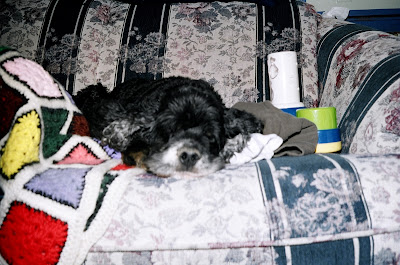I didn't get to try it out until a few weeks later on vacation at our family cabin for a week. I only dared to take one roll of film before I got a chance to have it developed and check out if the camera even worked. Well it works, but with very unpredictable results.
The interesting (and also frustrating) thing about this camera is that it is primarily meant as an automatic camera, in which the light meter determines whether the light is too high or too low and will not take the picture if it is not happy. However, it seems that the light meter requires extremely bright light to register sufficient light (though this may be a result of an old battery, something that I will need to look into).
You can however take it off of automatic which will turn off the light meter control and allow you to adjust the aperture, but not the shutter speed! The shutter speed is always set at 1/30 sec, which means that I have to use the aperture setting to adjust for light. On my other cameras, in changing the shutter speed to account for light, it allows me to use the aperture to vary depth and focus in my pictures. This limitation of the Canonet 28 means that I have less control over my pictures.
One benefit of the Canonet 28 is that the leaf-shutter format allows for flash synchronization whic I do not have on either of my other cameras. Currently the flash I am using doesn't allow me to use the automatic setting, but I can use it on the manual setting which means that I now need to learn to adjust the aperture for a flash. I am not usually a fan of using a flash, but I think that I might have some fun exploring with it in indoor or night/dark settings (where I am normally very limited with my other cameras).
As with my other cameras, this one has it's pros and cons and although I don't think it will become a camera that I depend on on a regular basis, I do think it will be fun to play with and to learn from.
Variety is the spice of life after all.
Both pictures had exact same lighting, yet turned out quite different
Focusing is unpredictable. Sometimes it focuses on the foreground, other times the background
Both of these were taken on the manual setting with the same aperture. Notice the difference in focus.
Having a flash will open up a whole new world (and learning curve) for me!
I actually kind of like the "studio portrait" look the flash gives








No comments:
Post a Comment